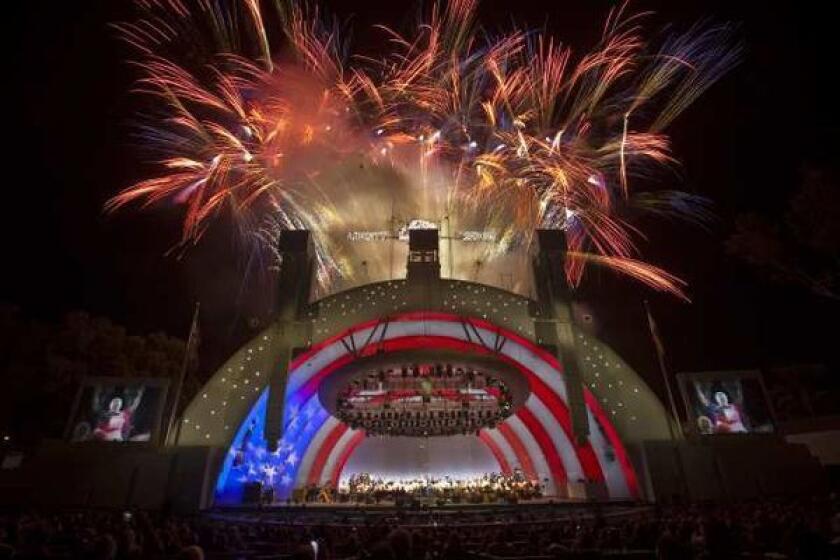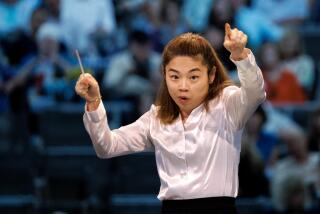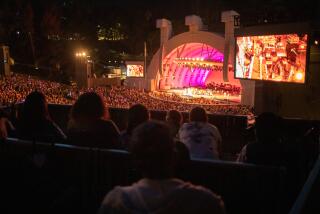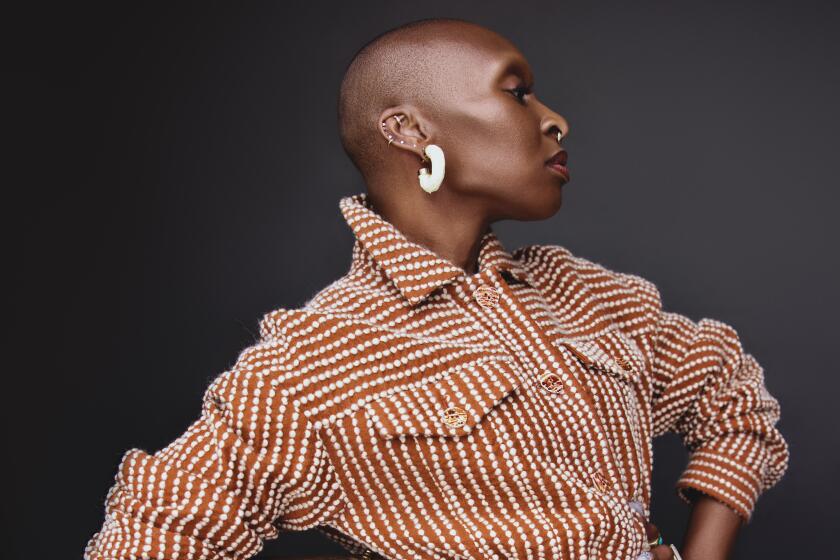The frenzied rush to prep the Hollywood Bowl for its first concert of the COVID-19 era
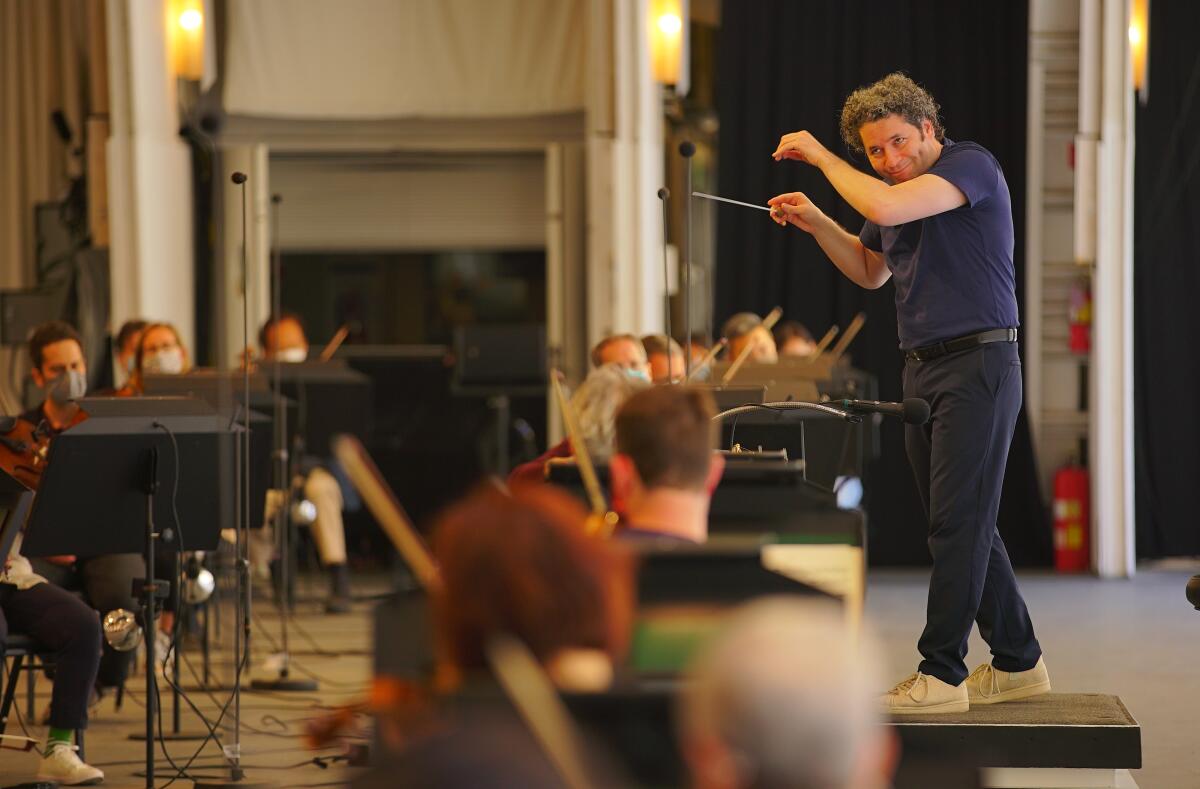
- Share via
“Cock-a-doodle-doo!”
The sound erupts joyfully from the giant speakers flanking the Hollywood Bowl hatch shell on a recent overcast afternoon. The historic venue is waking up after an 18-month hibernation brought on by the COVID-19 pandemic, which canceled an entire season for the first time in 98 years and accelerated the Los Angeles Philharmonic‘s plunge toward a staggering $105-million budget shortfall.
A few days before the Bowl’s reopening dress rehearsal in advance of Saturday’s free concert for essential workers, an unseen technician with a sense of humor is testing the sound system while about a dozen masked workers mop the stage and adjust the lights lodged in the giant halo hovering above.
Social distancing rules will reduce the audience capacity from the usual 17,500, but if California fully reopens by June 15, according to Gov. Gavin Newsom’s plan, the Bowl likely will be able to operate more than 80% full.
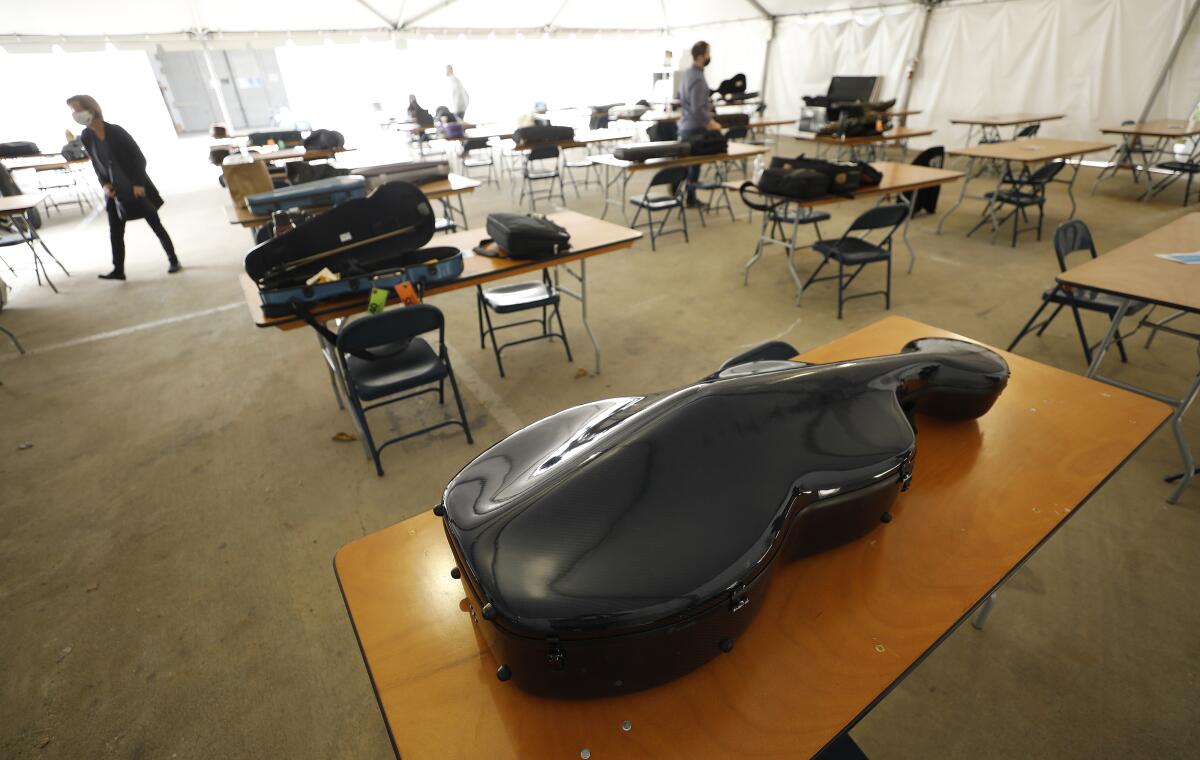
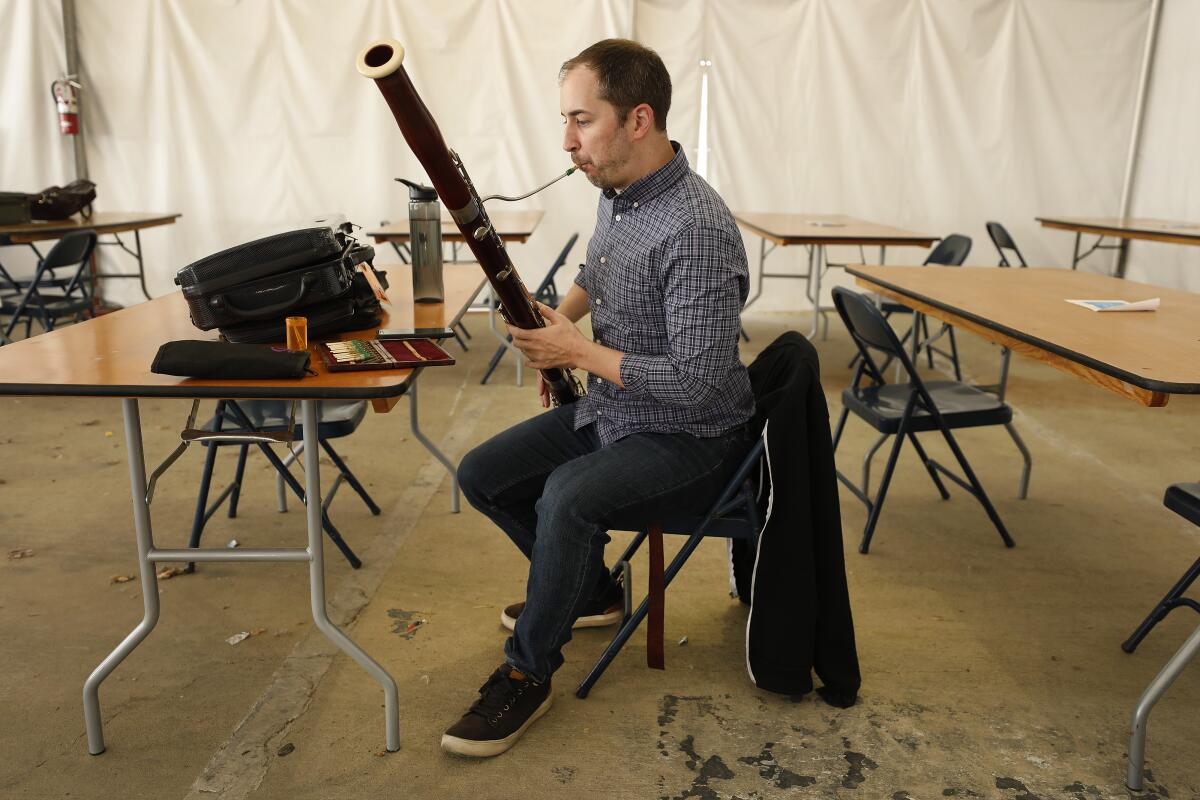
Throughout the pandemic, L.A. Phil President and Chief Executive Chad Smith has maintained laser focus on a core goal: restarting live performances. If infections remained stubbornly high, his team would hold shows for 100 people, for 1,000, for 4,000.
“There was this institutional resolve from the board and the musicians and the staff that regardless of the size of the audience we were going to put on concerts,” Smith says. “The financials might be terrible, but we decided if we could give concerts, we had to give concerts — we run the venue as stewards of the community.”
The Hollywood Bowl has announced its 2021 season lineup after an unprecedented 18 months dark due to the coronavirus pandemic. Here’s what’s on tap for summer fun seekers.
Artists were just as eager. Hollywood Bowl general manager and vice president of presentation Laura Connelly, who oversees non-classical programming, remembers the April day when Newsom unexpectedly announced the June target date for full reopening — “the Gavin bomb,” Connelly calls it.
“Our phones started blowing up. Managers and agents started calling and asking, ‘What does that mean for my artist? Are you booking? Can you hold the date?’” Connelly says. “Once Newsom said those words, things really accelerated in a good way because we now had a handle on what we could do.”
But what does it take to reopen one of the world’s most famous venues in the midst of a pandemic that has killed more than 580,000 Americans?
It requires making COVID-19 safety the founding principle of your operation, Smith says, and committing to a programming dash like never before. If reopening the Bowl is like riding a bike, Smith says, the organization has swapped out a Tour de France Cannondale for a unicycle.
“It’s a stepped process — how our box office works, how we handle our food service and how we think about parking at the Bowl,” Smith says. “Our production department is staging high caliber performances in a fundamentally changed environment. You have to reexamine everything you take for granted because the protocols demand it.”
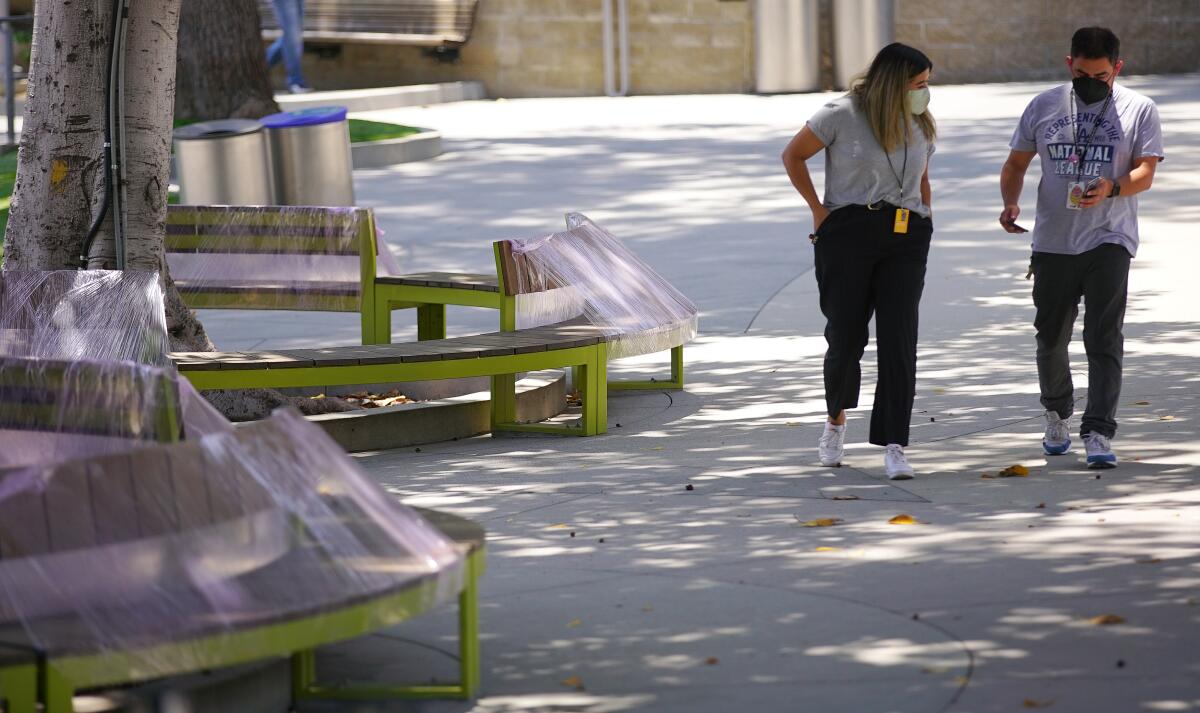
Mona Patel oversees COVID-19 safety. As vice president of human resources and general counsel, she checks the ever-changing county guidelines daily and relays that information to the team. Patel hired a COVID-19 monitor, Rose Doylemason, a former L.A. Phil HR assistant and receptionist who, after being furloughed, worked as an assistant site manager at Dodger Stadium’s COVID-19 testing center.
COVID monitors will roam the Bowl when it reopens, reminding patrons to wear a mask and maintain the appropriate distance in lines.
Patel says she is doing her best to rehire most of 300 seasonal employees who were laid off from the Bowl last year. That staff normally would total about 1,000, but this year it will be about 800 because of reduced audience capacity.
Reduced capacity also explains why the Bowl stands to earn about half the usual summer revenue of about $65 million, Smith says. But that’s still a massive improvement over what the organization thought it would make back in January.
Capacity is much more robust thanks to the Bowl’s recently announced vaccination policy, which reserves 85% of seats for fully vaccinated guests. The remaining 15% go to those who might be unvaccinated but can show negative results from a COVID-19 test taken within 72 hours of a performance.
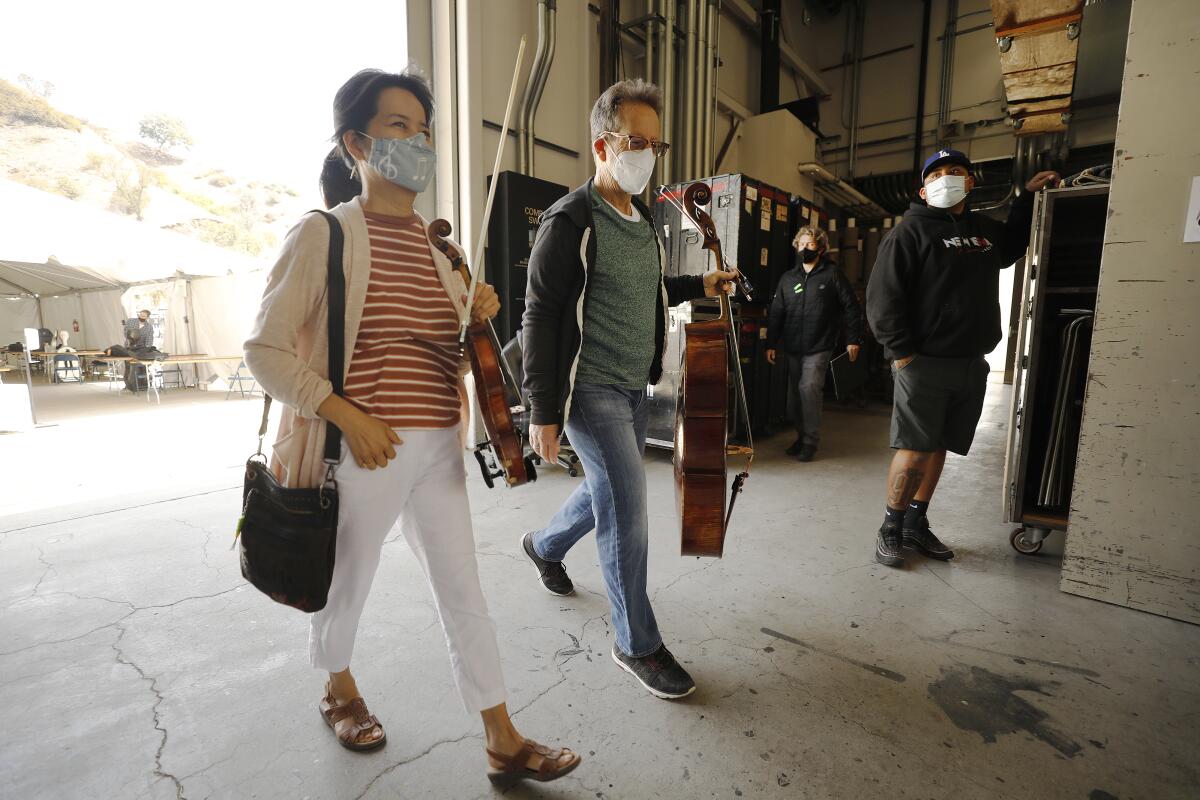
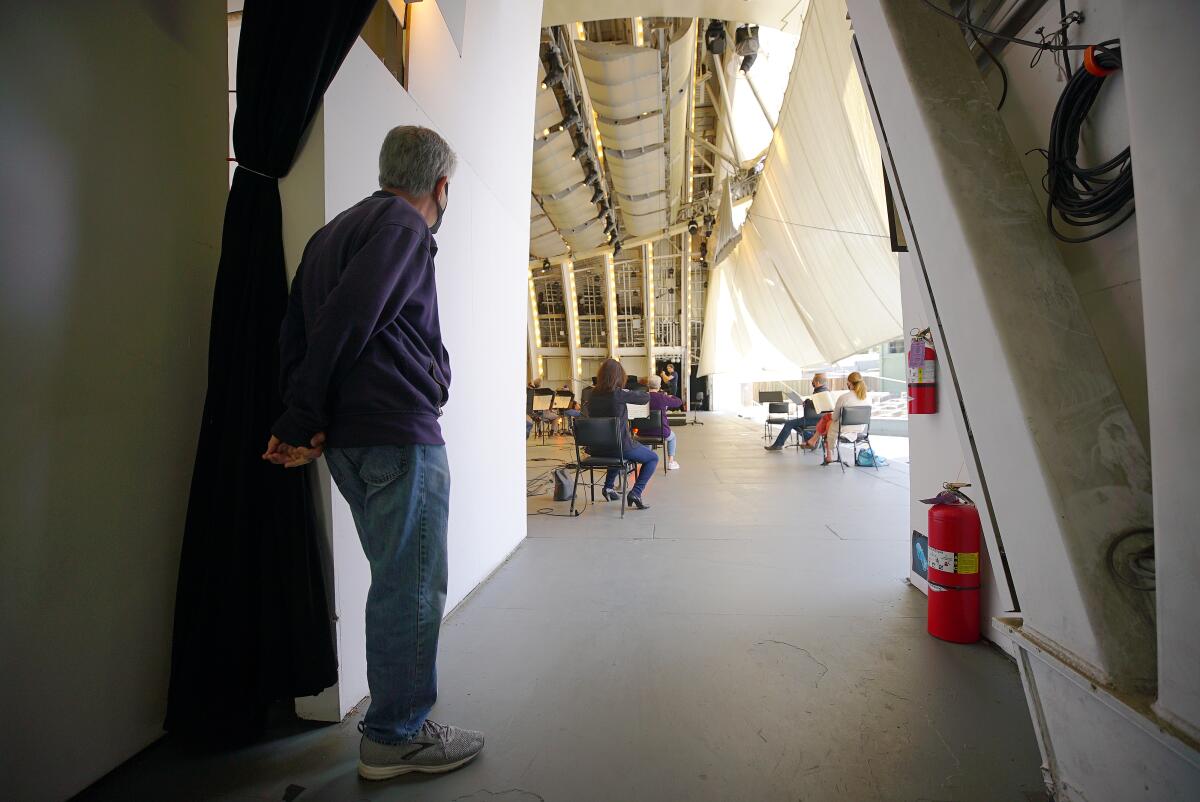
As VP of marketing and communications, Nora Brady is responsible for weaving safety protocols into the ticketing process and promotional materials. When people go to buy a ticket, they must verify that they have been fully vaccinated at least two weeks before the concert. Proof of vaccination must be shown at the gate. If the ticket buyer is not vaccinated, the Bowl’s website navigates the person to requirements for a COVID-19 test.
App messaging is being developed so that if digital vaccination records become available, guests will be pinged to pull those up for entrance.
The season that the Bowl announced this week is the fourth incarnation of a plan that hatched in September and got rescaled in fits and starts as the pandemic tore its unpredictable path around the globe.
The L.A. Phil normally takes about two years to program the classical portion of a Bowl season, says VP of artistic planning Meghan Martineau. Her team put together about 20 concerts for this season in a matter of months.
“You have no time frame, and you don’t know what the ramp up back is going to look like,” Martineau says. “And that’s kind of impossible when you’re dealing with 104 orchestra musicians who are not allowed to sit all together onstage.”
Vaccinated people will get 85% of the tickets for the Bowl’s 2021 season, which includes Christina Aguilera, Yo-Yo Ma and “Black Panther” live.
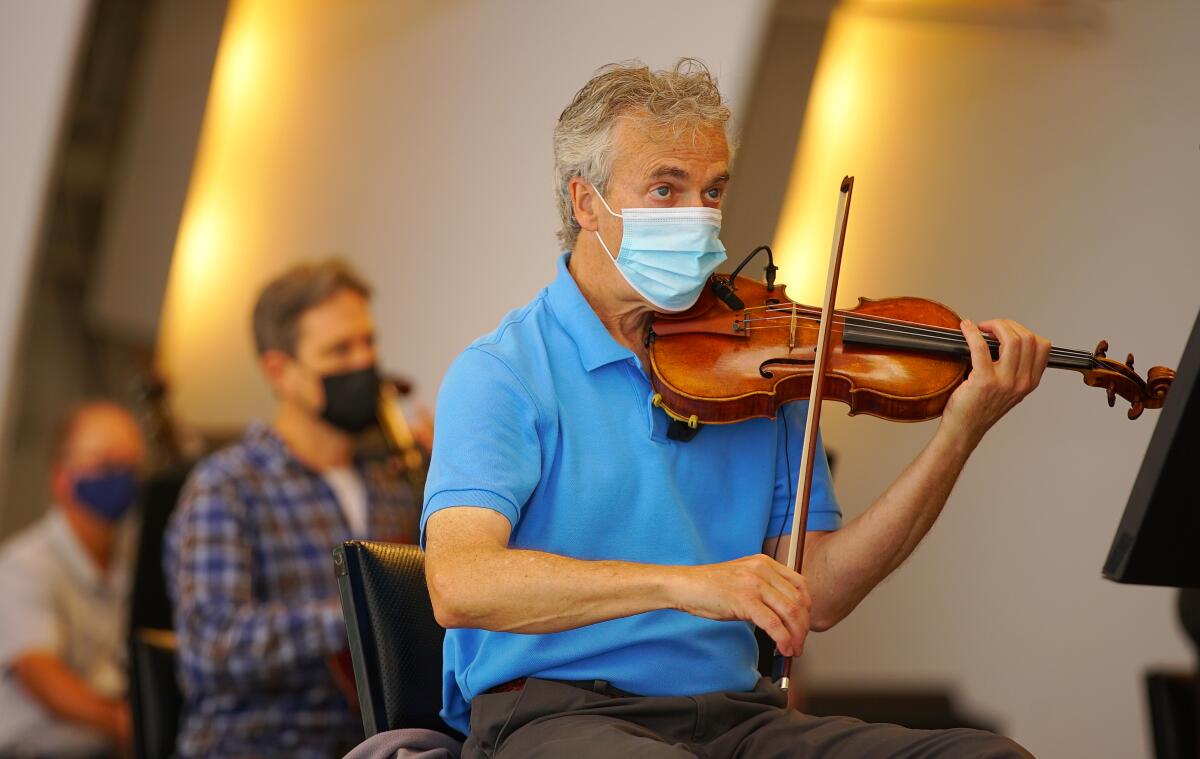
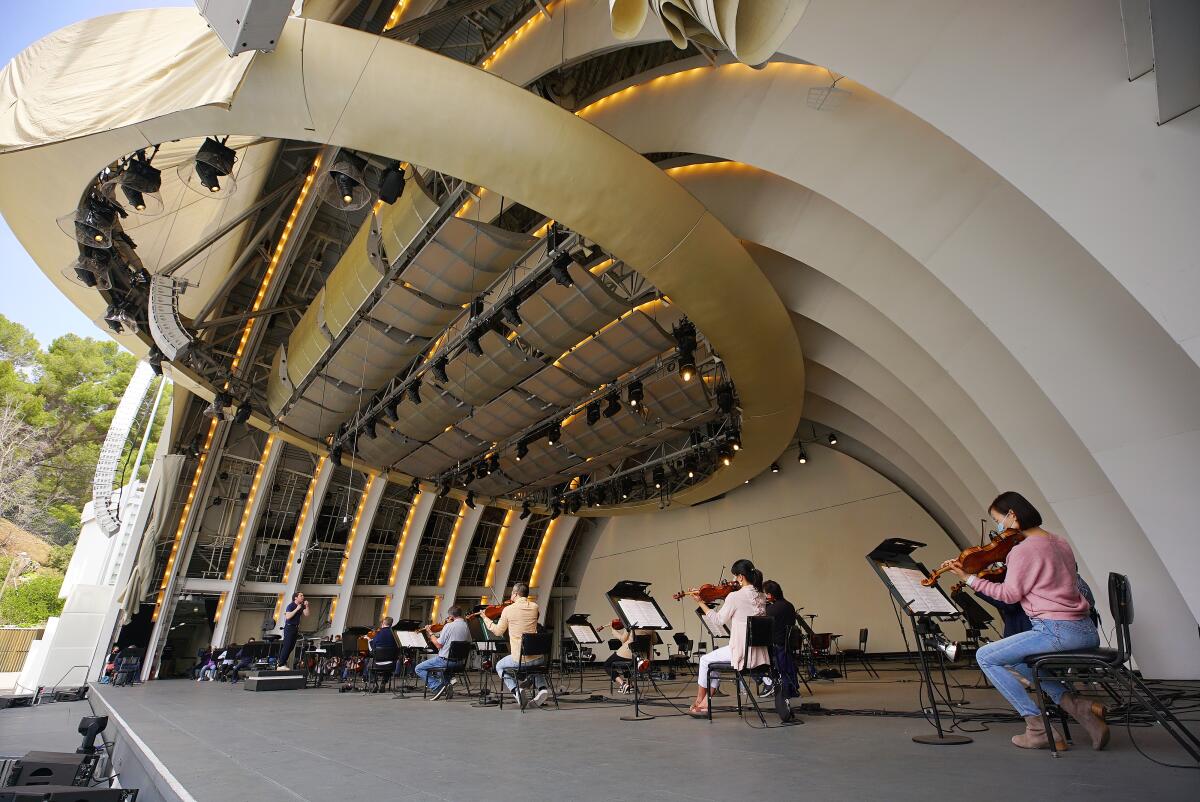
Current county guidelines call for string and percussion players to maintain six feet of distance. For brass players who can’t wear masks, distance extends to 12 feet. These guidelines have changed as the county moves through the state’s color-coded blueprint for reopening. L.A. County is currently in the yellow (moderate risk) tier, but that blueprint could become obsolete on June 15.
Based on that assumption, Martineau is banking on having at least 65 or 70 musicians onstage, which will make it possible to perform the exuberant compositions of Tchaikovsky and big, bold Mahler symphonies instead of the modest chamber-type fare she had been looking to book before.
It was Dan Song’s job to see that both the stage and the orchestra were back in working order. Safety equipment and rigging harnesses were the first to be replaced. The L.A. Phil used the stage as a TV and film studio during the pandemic, but it was never intended to go dark for a prolonged period of time, says Song, VP of philharmonic and production. Certain systems had been dormant for so long that there was some suspense surrounding whether or not they would boot up again.
“We took the dust covers off and looked at what we had,” he says. “Our iconic speaker system that hangs under the shell went up beautifully and turned on beautifully, and that was a huge sigh of relief.”
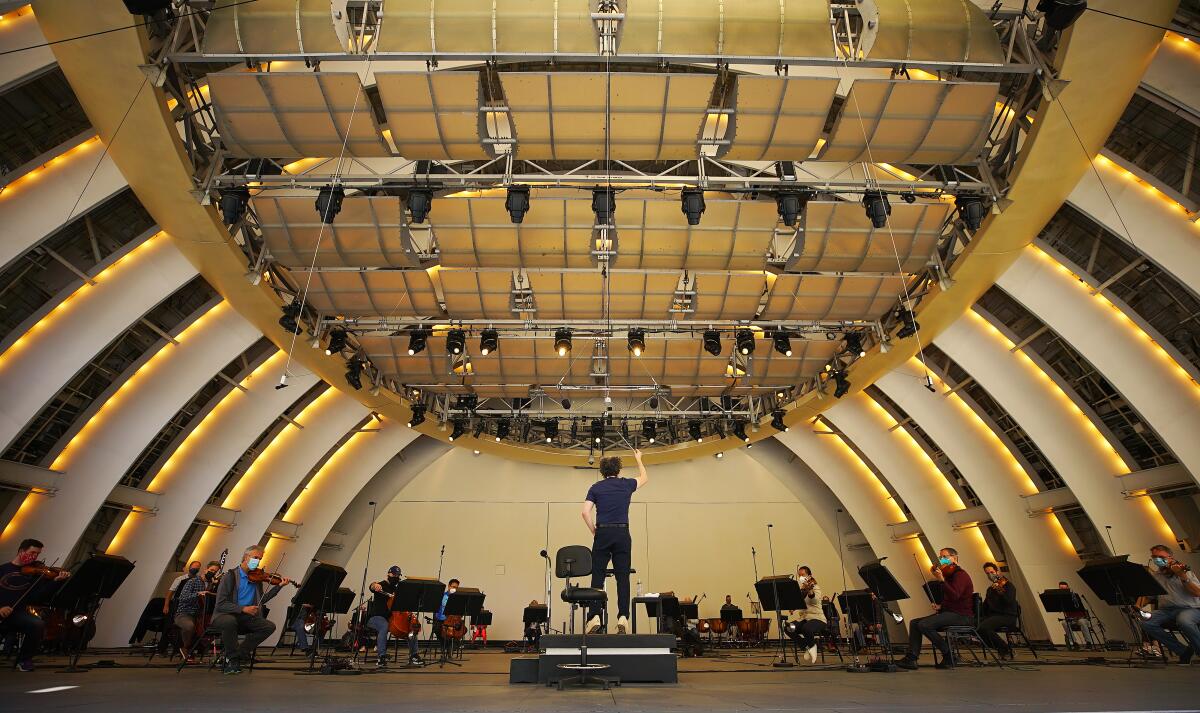
Skirball Cultural Center reopens with Ai Weiwei portraits of political dissidents, and the L.A. Phil streams its return to the Hollywood Bowl.
The orchestra has played virtual shows and has done its best to keep in shape, but Song knows that the muscles required for regular repetitive playing likely need to be exercised more.
A bit of that exercise comes with a big dash of adrenaline and emotion at Wednesday night’s dress rehearsal before an audience of about 400 family and friends spread out in the vast sea of benches and boxes under a sinking sun.
“Welcome back!” read the digital monitors beside the stage as Smith takes the mike to talk about what it means to be in this place together again. Dudamel tells the audience the next composition, Samuel Barber’s Adagio for Strings, will be performed in honor of the lives lost to the pandemic.
He ascends the podium. The orchestra begins to play. Audience members hug their pod mates and eyes glisten with tears. As the final note fades, Dudamel places his hands over his heart. There is a long, impenetrable silence before a sustained burst of applause.
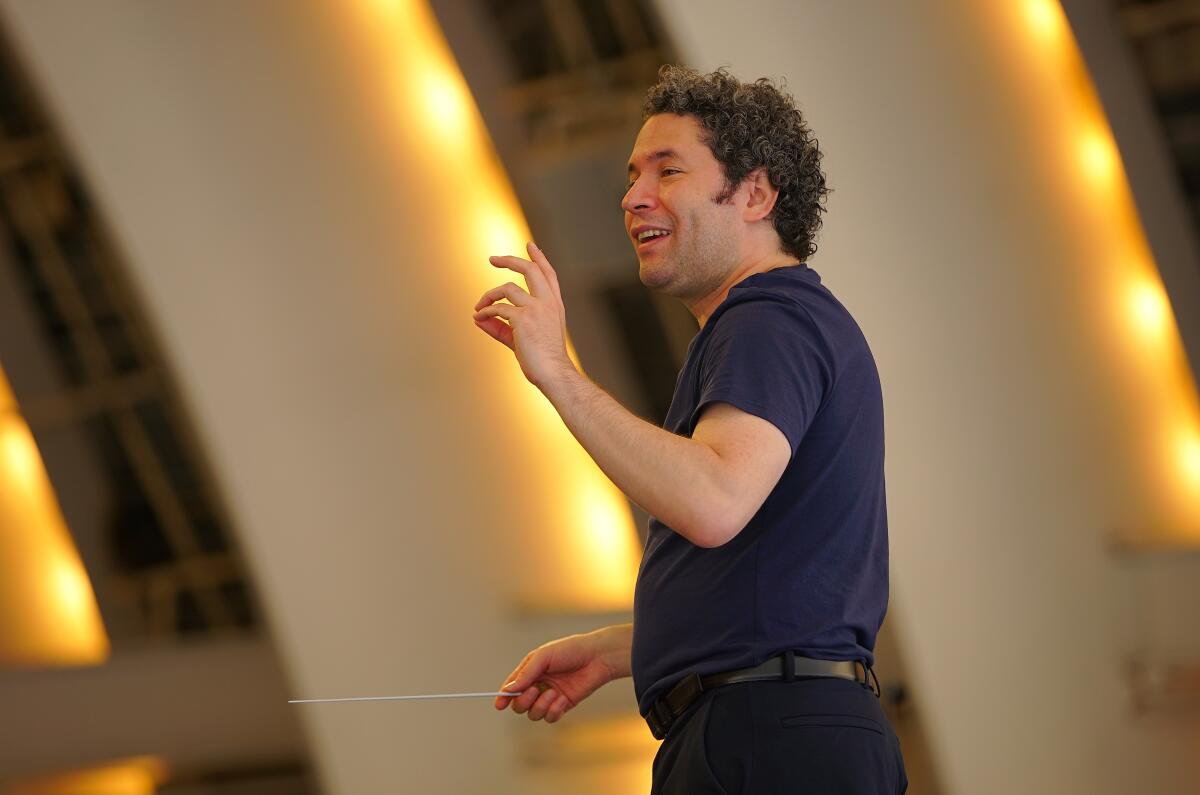
More to Read
The biggest entertainment stories
Get our big stories about Hollywood, film, television, music, arts, culture and more right in your inbox as soon as they publish.
You may occasionally receive promotional content from the Los Angeles Times.
